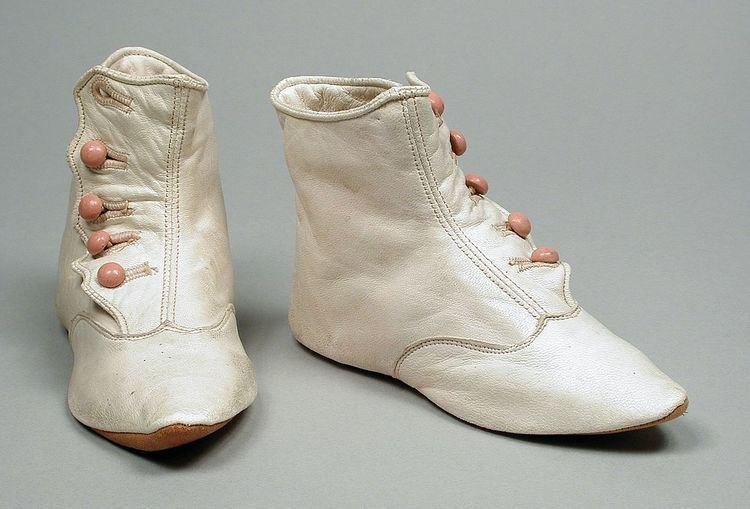 | ||
Kidskin or kid leather is a type of soft, thin leather that is traditionally used for gloves (hence the phrase 'kid gloves,' used since at least 1888 as a metaphor for careful handling). It is widely used for other fashion purposes such as footwear and clothing. Kidskin is traditionally made from goatskin - more specifically, the skin of young goats (or 'kids'), although equivalent leathers such as lambskin and chickenskin (actually a form of calfskin) give the same effect.
Contents
Usage
Kid leather is, and has been used for a number of purposes other than gloves and footwear. Early flexible hair rollers were sometimes made from kidskin, giving a very tight curl.
Papermaking
While vellum is often made using calfskin, kidskin can also be used and in some cases, was preferred. David Laurent de Lara, describing himself as illuminating artist to Queen Victoria, favoured Italian kid vellum for his work.
A form of early medieval parchment, called carta lustra, acting as tracing paper was made using kidskin.
Dolls
Kid was particularly widely used in doll-making during the nineteenth and early twentieth century as a popular material for both French and German doll bodies, particularly fashion dolls.
Musical instruments
Kid-leather is often used in the construction of musical instruments such as the bag of the tsampouna, a form of Greek bagpipes. It was also an option for drumheads such as those on tambourines, and specifically, on the Bulgarian daire.
Industrial uses
The Dalén light, used in lighthouses, uses a paraffin-wax saturated kidskin diaphragm in its construction.
Types
In 1916 it was noted that there were over sixty types of goatskin, distinguished by the tanning and finishing processes used. Some of these types are:
